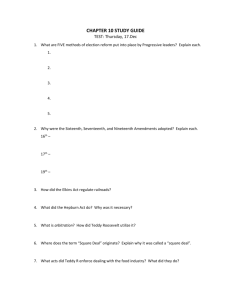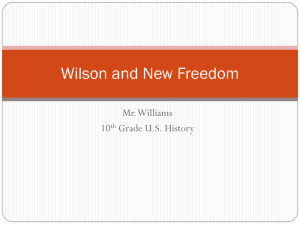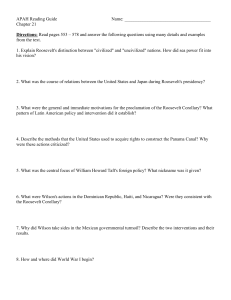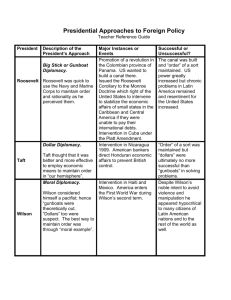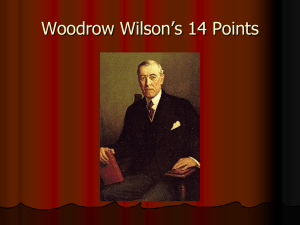APAH Name: Reading Guide Brinkley, Chapter 21 Directions: Read
advertisement
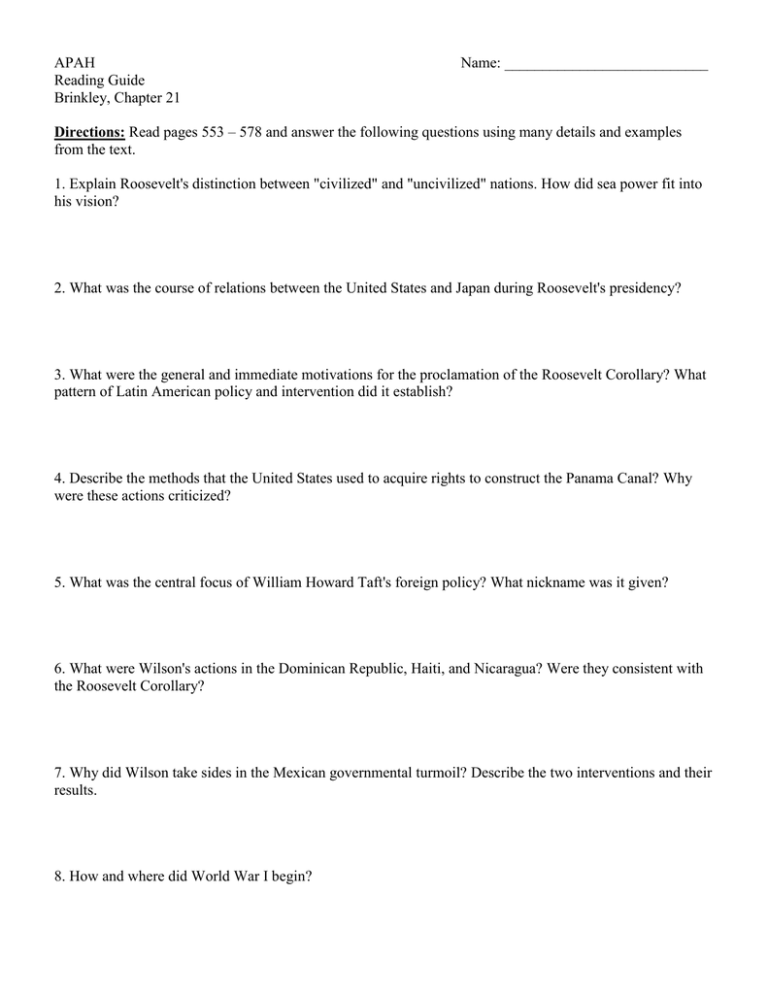
APAH Reading Guide Brinkley, Chapter 21 Name: ___________________________ Directions: Read pages 553 – 578 and answer the following questions using many details and examples from the text. 1. Explain Roosevelt's distinction between "civilized" and "uncivilized" nations. How did sea power fit into his vision? 2. What was the course of relations between the United States and Japan during Roosevelt's presidency? 3. What were the general and immediate motivations for the proclamation of the Roosevelt Corollary? What pattern of Latin American policy and intervention did it establish? 4. Describe the methods that the United States used to acquire rights to construct the Panama Canal? Why were these actions criticized? 5. What was the central focus of William Howard Taft's foreign policy? What nickname was it given? 6. What were Wilson's actions in the Dominican Republic, Haiti, and Nicaragua? Were they consistent with the Roosevelt Corollary? 7. Why did Wilson take sides in the Mexican governmental turmoil? Describe the two interventions and their results. 8. How and where did World War I begin? 9. Which nations were referred to as the Allies and Central Powers in World War I? 10. What general influences and German actions forced President Woodrow Wilson out of his professed stance of true neutrality? 11. Before 1917, how did Wilson balance the demands for preparedness and the cries for peace? What effect did his position have on the 1916 election? 12. What key events early in 1917 combined to finally bring the United States fully into World War I? 13. On what aspect of the war did American entry have the most immediate effect? Explain. 14. What impact did events in Russia have on the need for American land forces in Europe? 15. What role did American ground forces play in the conflict? 16. What were the new technologies used in World War I? How did they change the nature of warfare? 17. On what two methods did the Wilson administration depend to finance the war effort? How did the war cost compare with the typical peacetime budgets of that era? 18. Describe how the various "war boards" were organized. What were the roles of the War Industries Board (WIB) and the National War Labor Board? 19. What tactics did the Committee on Public Information (CPI) employ to propagandize the American people into unquestioning support of the war effort? 20. In what ways did the government use the Sedition Act and related legislation to suppress criticism? Who suffered most? 21. What private acts created a climate of repression during the War? 22. Into what three major categories did the Fourteen Points fall? 23. What obstacles did Wilson face in getting the European leaders to accept his approach to peace? What domestic development weakened his position? 24. Despite President Wilson's disappointments at Versailles, what was his most visible triumph? 25. Who were the main domestic opponents of American entry into the League of Nations? What were the two categories of opponents? How much of the blame for the treaty's defeat must be laid on Wilson himself? 26. What happened to the American economy in the postwar years, 1919-1921? 27. What inspired the labor unrest of 1919, and what were the most important strikes? What was the public reaction to the wave of strikes? 28. Describe how African American military and industrial contributions during World War I raised black aspirations. What resulted after the War? 29. What led to the string of race riots during and shortly after the war? What were the riots like, and where was the first episode? 30. What inspired the Red Scare of 1919 to 1920? Was the threat real or imagined? 31. What did the results of the election of 1920 indicate about the mood of the American people?
